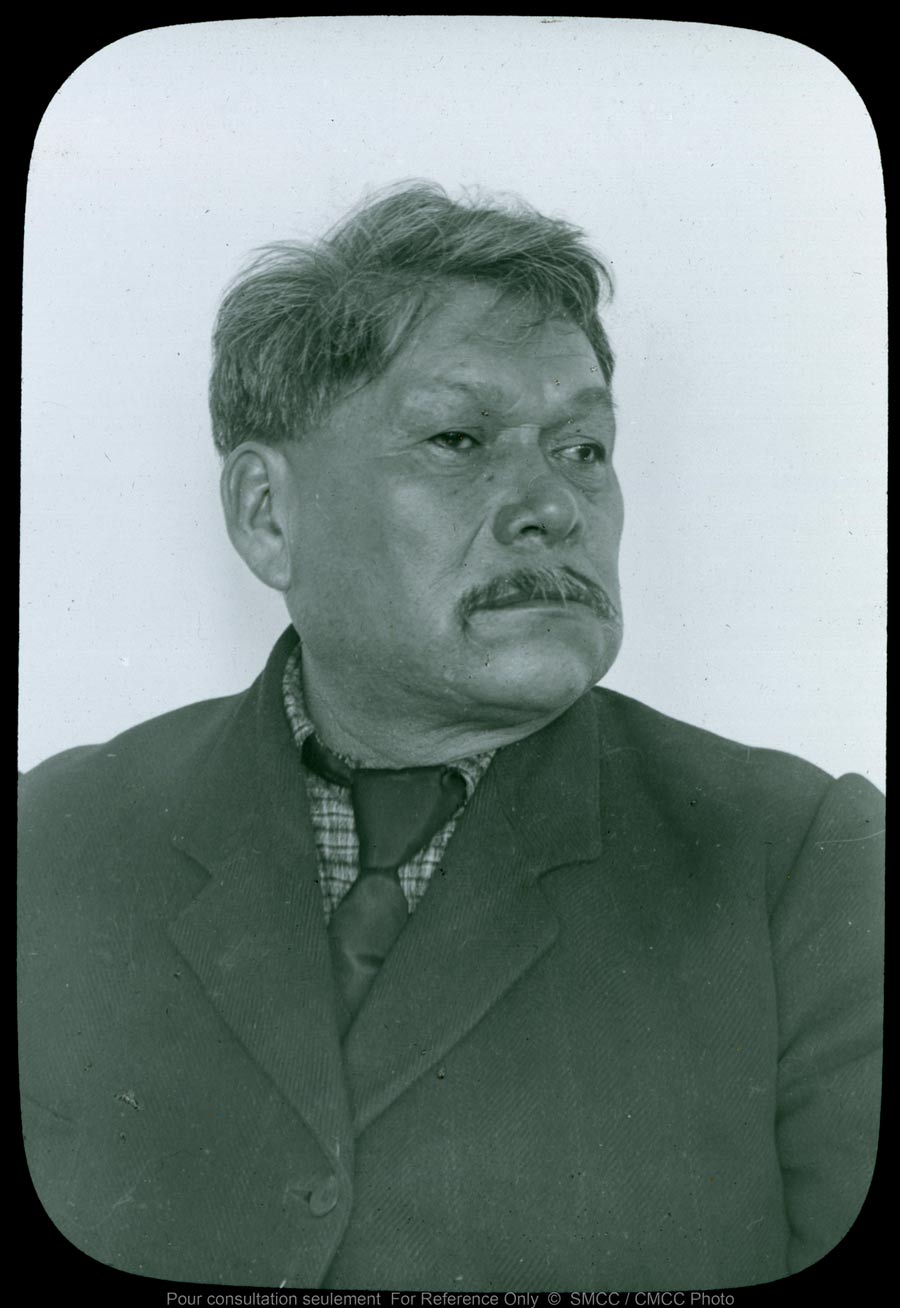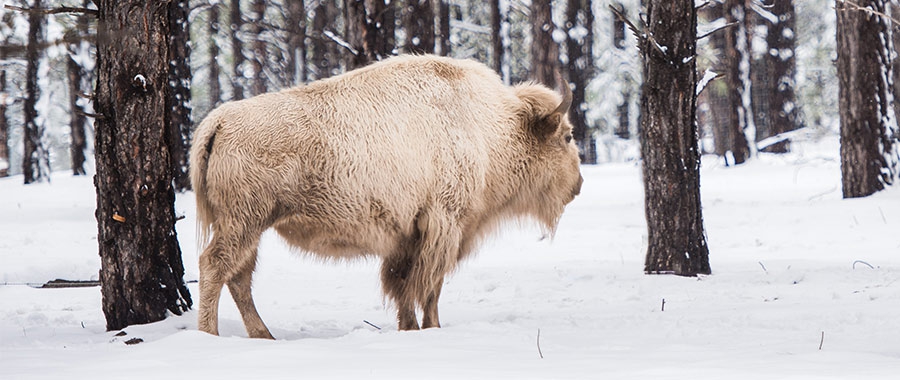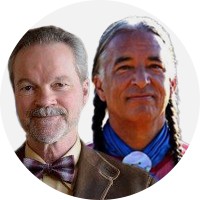The views expressed in our content reflect individual perspectives and do not represent the authoritative views of the Baha'i Faith.
In 1992, Iroquois Chief Jacob (“Jake”) Thomas, a respected “faith-keeper” and interpreter of Haudenosaunee culture, took the unprecedented step of reciting the “Great Law of Peace.”
The Chief recited those sacred teachings of Deganawida, the Peacemaker in English, first in January, 1992 (over five days) and then in September, 1992 (for nine days).
For further information on Deganawida, the Peacemaker, here is a link to the following article: Christopher Buck, “Deganawida, the Peacemaker.” American Writers: A Collection of Literary Biographies. Supplement XXVI. Edited by Jay Parini. Farmington Hills, MI: Scribner’s Reference/The Gale Group, 2015. Pp. 81–100.
An estimated 2,000 people—including many non-Iroquois—attended the second event. These events attracted media coverage across Canada. Then again, in the summer of 1994, Chief Thomas repeated the event. Responding to criticism, Chief Thomas, offered this justification:
I think the white man needs to understand. It isn’t that he’s going to take the law and use it himself. … They already did! The thirteen colonies already took the Great Law for their so-called Constitution. So what should we be afraid of? … If they want to learn it, they have a right to. That should have been done 500 years ago, to study and respect the [Iroquois] Confederacy. Maybe we wouldn’t have the problems we have today if they would have studied our people, and [would now] understand and honor and respect [us]. – quoted by Michael K. Foster in “Jacob Ezra Thomas: Educator and Conservator of Iroquois Culture,” Histories of Anthropology Annual 2005, p. 227.
Here’s an excerpt from the spiritual teachings of Deganawida, the Peacemaker, from “Concerning the League,” recited by Chief John Arthur Gibson in 1912:

Chief John Arthur Gibson (d. 1912), who, shortly before his death, dictated the complete teachings of Deganawida, the Peacemaker—i.e. “The Great Law of Peace”—in the original Onondaga language. This version (referred to as “The Gibson-Goldenweiser Version”) existed as a manuscript for many years until it was finally published, with an English translation, in 1992.
Thereupon [Deganawida] stood up in the center of the gathering place, and then he said, “First I will answer what it means to say, ‘Now it is arriving, the Good Message.’ This indeed, is what it means: When it stops, the slaughter of your own people who live here on earth, then everywhere peace will come about, by day and also by night, and it will come about that as one travels around, everyone will be related. … Now again, secondly, I say, ‘Now it is arriving, the Power,’ and this means that the different nations, all the nations, will become just a single one, and the Great Law will come into being, so that now all will be related to each other. Now in turn, the other, my third saying, ‘Now it is arriving, the Peace,’ this means that everyone will become related, men and also women, and also the young people and the children, and when all are relatives, every nation, then there will be peace as they roam about by day and also by night. … When they are functioning, the Good Message and also the Power and the Peace, moreover, these will be the principal things everybody will live by; these will be the great values among the people.” – Concerning the League: The Iroquois League Tradition as Dictated in Onondaga, by John Arthur Gibson (newly elicited, edited and translated by Hanni Woodbury in collaboration with Reg Henry and Harry Webster, on the Basis of A A Goldenweiser’s manuscript), Winnipeg: Algonquian and Iroquoian Linguistics, 1992, pp. 36–41.
Christopher Buck and Kevin Locke carry on their ongoing spiritual conversation about indigenous Messengers of God and their relationship to the teachings of the Baha’i Faith:
Q: In light of the above passage, Kevin, let’s broaden the scope of our discussions on indigenous Messengers of God. First, would you agree that—in addition to Baha’u’llah and White Buffalo Calf Woman—Deganawida, the Peacemaker, was another Messenger of God?
A: This morning I re-read “Concerning The League,” the English translation of the Onondaga account of the mission of Tekanawita [Deganawida] and pondered these two statements from the Baha’i writings:
Unto the cities of all nations He hath sent His Messengers, Whom He hath commissioned to announce unto men tidings of the Paradise of His good pleasure, and to draw them nigh unto the Haven of abiding security, the Seat of eternal holiness and transcendent glory. – Baha’u’llah, Gleanings from the Writings of Baha’u’llah, p. 145.
Undoubtedly in those regions [America] the Call of God must have been raised in ancient times … – Abdu’l-Baha, Tablet to Amir Khan (authorized translation).
Despite the fact that “Unto the cities of all nations He hath sent His Messengers” and that Abdu’l-Baha, in the Tablet to Amir Khan, assures us that the Divine Call has been raised in North America, most Americans are oblivious to the spiritual heritage of this land!
So, before I answer, let me first ask you a question: Is there an official Baha’i definition of “Messenger of God”?
Q: Yes, I think so. Bear in mind that the Baha’i teachings often speak of “Manifestations of God.” But this term is unfamiliar to the public—which is why we have been using “Messengers of God” instead. So “Messengers of God” and “Manifestations of God” are equivalent terms, as you know, simply indicating God’s prophets and educators. For a good definition, please take a quick look at this official Baha’i website: Manifestations of God. Below, I’ve highlighted the main points, in bullet-point format. A Manifestation or Messenger of God:
- Cultivates humanity’s spiritual, intellectual and moral capacities.
- Exerts an incomparable influence on the evolution of human society.
- Has a distinct individuality and a definite mission.
- Educates the souls of men, and refines the character of every living man.
- Is a light-bringer of the world.
- Releases a fresh outpouring of spirit into creation, with a universal effect.
- Is a new “sun” that appears and shines “upon the worlds of spirits, of thoughts and of hearts.”
- Releases new forces that, over time, increasingly permeate human affairs, providing the main impulse for the further development of consciousness and society.
- Provides the guidance necessary for humanity’s social and spiritual evolution.
- Acts as a skilled physician, with a complete grasp of the nature of the body of humanity.
- Prescribes the appropriate cure for the ills of the world—one that best meets the requirements of the time in which the Messenger of God appeared.
So, based on the official definition and criteria listed above, do you agree that White Buffalo Calf Woman meets these criteria—and also Deganawida, the Peacemaker, as well?
A: Yes. One of my mother’s [Patricia Locke’s] great concerns was the general lack of awareness about the holy souls that appeared on our half [the Western Hemisphere] of the planet. Of the hundreds of known North and South American Messengers, perhaps a representative few could be identified and described, such as Tekanawita/The Peacemaker in the Haudenosaunee (Iroquois) sacred tradition, and Ptehiŋčala Ska Wiŋ́/White Buffalo Calf Woman in the Lakota sacred tradition, and Sweet Medicine (“Arrow Boy”) in the Cheyenne sacred tradition.
Q: Would you say that the sacred teachings of the Peacemaker, White Buffalo Calf Woman, and Baha’u’llah are all from God? Do they each come from the same divine Source?
A: Yes. They are all clearly about ennobling, spiritualizing and raising the people from a debased state to a heavenly condition. The messages of both White Buffalo Calf Woman and Tekanawita/The Peacemaker burst with universal themes that align perfectly with Baha’u’llah’s message to the world today. But one can see that they are attuned to the exigencies of those particular local kindreds and eras.
Q: This is fascinating, illuminating and important! How do the sacred teachings of the Peacemaker and White Buffalo Calf Woman compare to those of Baha’u’llah?
A: Both Tekanawita’s and White Buffalo Calf Woman’s messages are 100% about establishing and broadening the Covenant—that eternal agreement between the Creator and the creation. But they are very different in that White Buffalo Calf Woman’s message is concerned with the overarching, basic provisions regarding laws of prayer, fasting, coming of age, making of relatives, etc., and Tekanawita’s message is about creating a divine administrative order, a system of just human governance. Both messages have similar themes: transformation, reconciliation, divine virtues, sacredness of fire, tree symbolism, succession of divine authority, etc.
Q: So if that’s the case, would you also agree that that these two indigenous spiritual traditions—the Lakota and Haudenosaunee spiritual heritages—are perfect examples of the Baha’i teaching the “oneness of religion”?
A: Yes, definitely.
Q: I consider Concerning the League to be a holy book—a sacred text that should be recognized alongside the scriptures of the great world religions. Do you agree?
A: Absolutely! I have always considered it a miracle that the Haudensaunee (Iroquois) were able to hold these priceless traditions intact throughout the horrendous colonial and post-colonial genocidal campaigns. We should all be grateful that they have preserved such a priceless global spiritual heritage. The Haudenosaunee sacred narratives—among all the Native American spiritual traditions—are perhaps the most accessible to Euro-American sensibilities and could serve as a point of entry to the universe of indigenous spiritual heritage.
Dedicated to the late, former member of the Universal House of Justice, David S. Ruhe, M.D. (d. 200 5), who wrote, in a paper presented at the Hasan M. Balyuzi Memorial Lecture, at the 18th Annual Bahá’í Studies Conference, August 13, 1994, at Harvard Law School:
To the warring tribes 700–800 years ago there came an astonishing Prophet of Peace—Deganawida united five, later six, mutually hostile tribal groups in a federal union based on democracy, the first in the Western Hemisphere. He cemented this union with a “Great Law of Peace,” a constitution which propounded one expansive human family…. And thus, in God’s Plan, with Benjamin Franklin and Thomas Jefferson as perceptive mediators, the Bill of Rights and the Constitution were vital steps (after the War of Independence [1775–1783]) toward realizing in America the Iroquois concept of the primacy of individual rights as superior to property and power. And of course the Iroquois foreshadowed, in their Longhouse of sky and earth, the planetary message of the Bahá’í Faith for today. – David S. Ruhe, M.D., “A New Evolution: Religious Bonding for World Unity,” Journal of Bahá’í Studies 6.4 (1994–1995): 45–57 [45].
















Comments
Sign in or create an account
Continue with Googleor